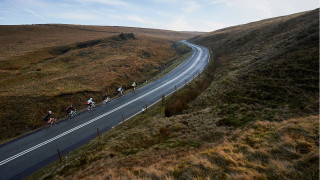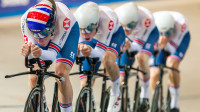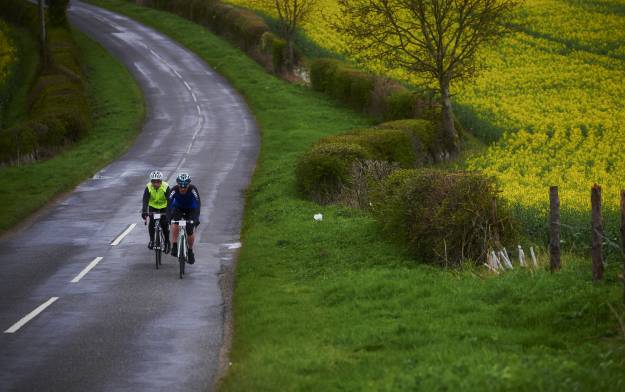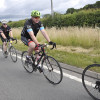Knowledge Level: Intermediate
If you start researching cycling training, or even just question a few of your club-mates, you can guarantee you will get conflicting advice. One source will adamantly defend traditional long and steady winter training but another will dismiss such training as a waste of time and say that high intensity intervals are the way to cycling success. You can easily end up more confused than when you started and still unsure how best to spend your valuable training time.
Is there a fat burning zone?
The so-called fat burning zone and its application to training and weight loss is a classic case of a piece of science being misinterpreted by the fitness industry. At lower intensities, your body will derive a higher proportion of its energy from burning fat and so, for fat loss, people were recommended to train at these low intensities. The problem is, by working out at these low levels, the actual number of calories you burn in a typical training session will be relatively small. Train harder and, although you will mostly be burning carbohydrates, you will get through a lot more calories. At the simplest level for fat loss, consistent net calories in vs calories out is the key thing.
What about high intensity intervals?
HIIT (High Intensity Interval Training) has been a buzz training trend for the last few years. It stems from the work of Dr Izumi Tabata. He was the primary researcher looking into the impact of high intensity training on aerobic/anaerobic performance at the National Institute of Fitness and Sports in Tokyo. He took two groups of elite speed-skaters and subjected them to two different 6-week cycling training regimes. Both groups trained for five sessions per week but whilst the first group performed pretty standard moderate level intensity exercise for each of their sixty minutes sessions the second group followed a radically different protocol. For each of their five sessions, after a warm-up they would perform 7-8 20 seconds near maximal sprints with 10 seconds recovery in between equating to about four minutes of real work. At the end of the 6 weeks, both groups were tested for improvements in both their aerobic and anaerobic capabilities. The moderate intensity/longer duration group did show a significant improvement in their aerobic capacity but not in their anaerobic. However, not only did the high intensity/short duration group unsurprisingly increase their anaerobic capacity, but also showed a greater increase in aerobic ability.
Subsequent studies on HIIT training protocols have shown similar results as well as a host of health and weight loss benefits. With such impressive gains from such incredibly short workouts, the appeal is obvious but, if you are training for a sportive, they are not the magic bullet short-cut they might appear to be.
Specificity is the key
Specificity is one of the fundamental principles of sports science and simply states that the best training for an activity is, doing that activity. For a five hour sportive, that means making sure you have put in the hours in the saddle and no amount of HIIT is going to make up for that. These long rides are essential for developing muscular endurance, learning how to pace effectively and for practicing your fuelling and hydration strategies. They are also vital for developing your body’s ability to utilise fat as a fuel.
Fat burning adaptation
This is where it is vital to differentiate between performance benefits for endurance cycling and health/weight loss benefits. Training for long durations at low “fat burning” intensities might not burn calories as quickly or give the same health benefits as HIIT training in such a time efficient way but it is effective in developing your ability to utilise your fat reserves as a fuel. This physiological adaptation is one of the key determining factors of endurance performance. Without it, you are reliant on the carbohydrates you can take in as you ride. Make a mistake with your fuelling or go too hard and stall your digestion and you will come to a grinding halt. Having a body that is well adapted to burning fat means that you don’t have to walk this nutritional knife-edge on every long ride and the only way to develop this is by doing those endurance rides.
For most sportive riders, training to ride faster isn’t the key to better results. The aim is training not to slow down. It is a subtle difference but a very important one. It’s about building on the pace and intensity you can sustain for one or two hours and extending that to four, five or more. Pacing and fuelling play major roles in achieving this but fat burning ability is also key.
So, just long and steady then?
No. Strict long and steady winter base training can be effective for professional riders, who can log 30-hour plus weeks. The sheer volume provides the training stimulus and gives them the deep base of endurance fitness they require for the heavy racing load they have to contend with in-season. However, for amateur riders who are having to juggle work, family and other commitments and can only probably manage 5-15 hours weekly on the bike, sticking purely to low intensity isn’t the most effective way to train. You've also got to remember that pros are training for an extremely high volume season which even the most committed amateur won't come anywhere near.
It's also worth thinking about the timing of your goals for the next season. If you're looking at late spring or early summer events, do you really need to be battling through the worst of the winter? Maybe, through December and January, a plan with more cross training or an indoor emphasis would be better?
The British Cycling 12-week "Real Life” Winter Training Plan
The British Cycling 8-week Indoor Time Efficient Training Plan
What should I do then?
Long and steady weekend rides should form the foundations of your winter training but they should be complemented by higher intensity shorter workouts during the week. In the early part of the winter, these sessions should focus on Zone 3 (Tempo), Zone 4 (Threshold) and the “Sweet-Spot” that straddles both of these zones. As the winter goes on, the intensity of these sessions should rise and you should also include some higher intensity efforts into your longer weekend rides.
Building your sportive fitness is similar to building a house. Long and steady rides, which develop your fat burning ability and endurance, are the solid foundations that can’t be skimped on. Progressively higher intensity efforts build the subsequent floors, with each leading into and allowing the next. HIIT type efforts are the tiles on the roof and, although they may deliver impressively rapid health and fitness gains, for successfully completing a sportive, without the foundations and floors beneath, they will come crashing down.
This is the approach that is used in the British Cycling Training Plans and will allow you to achieve your best possible sportive results.















